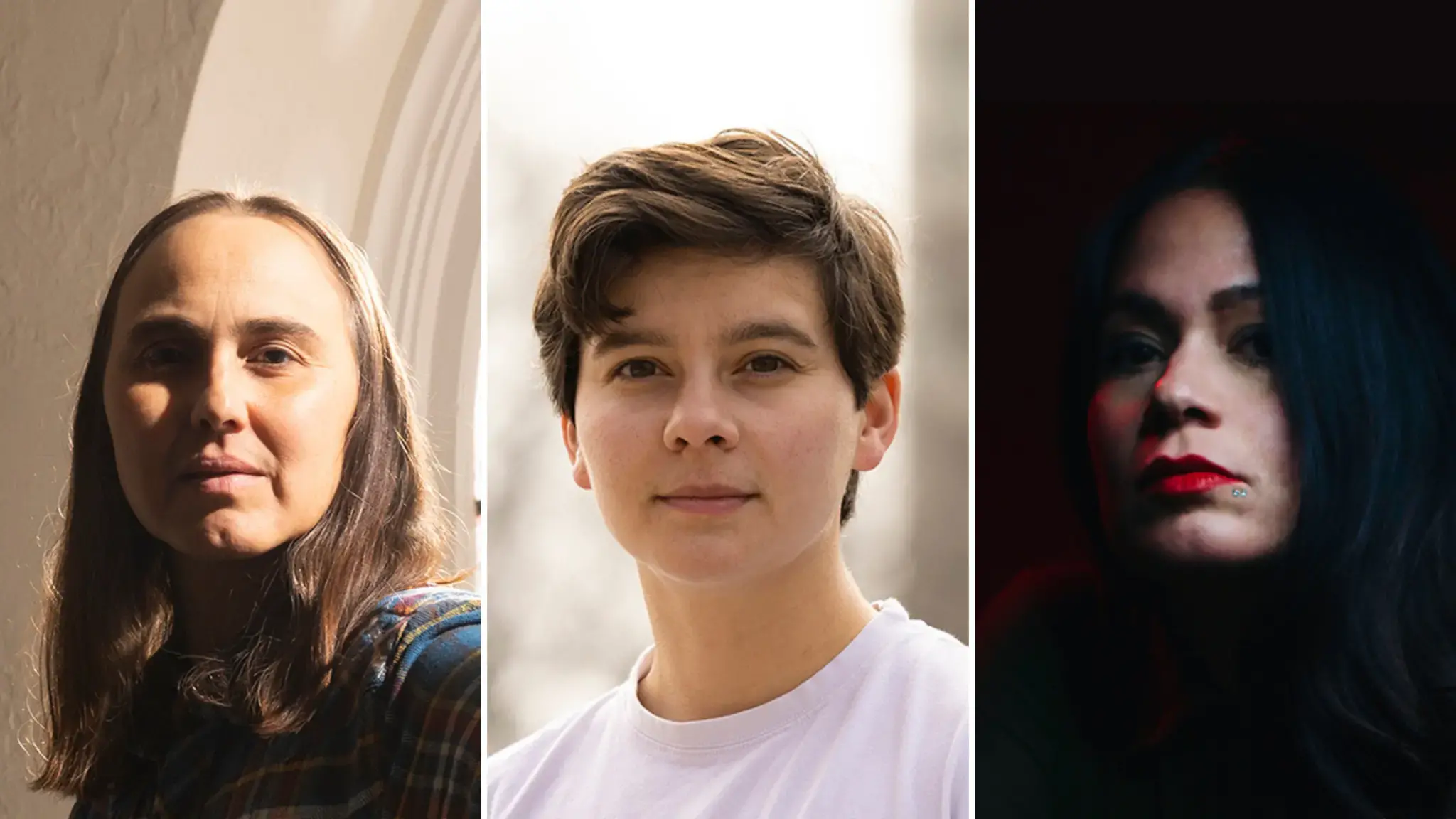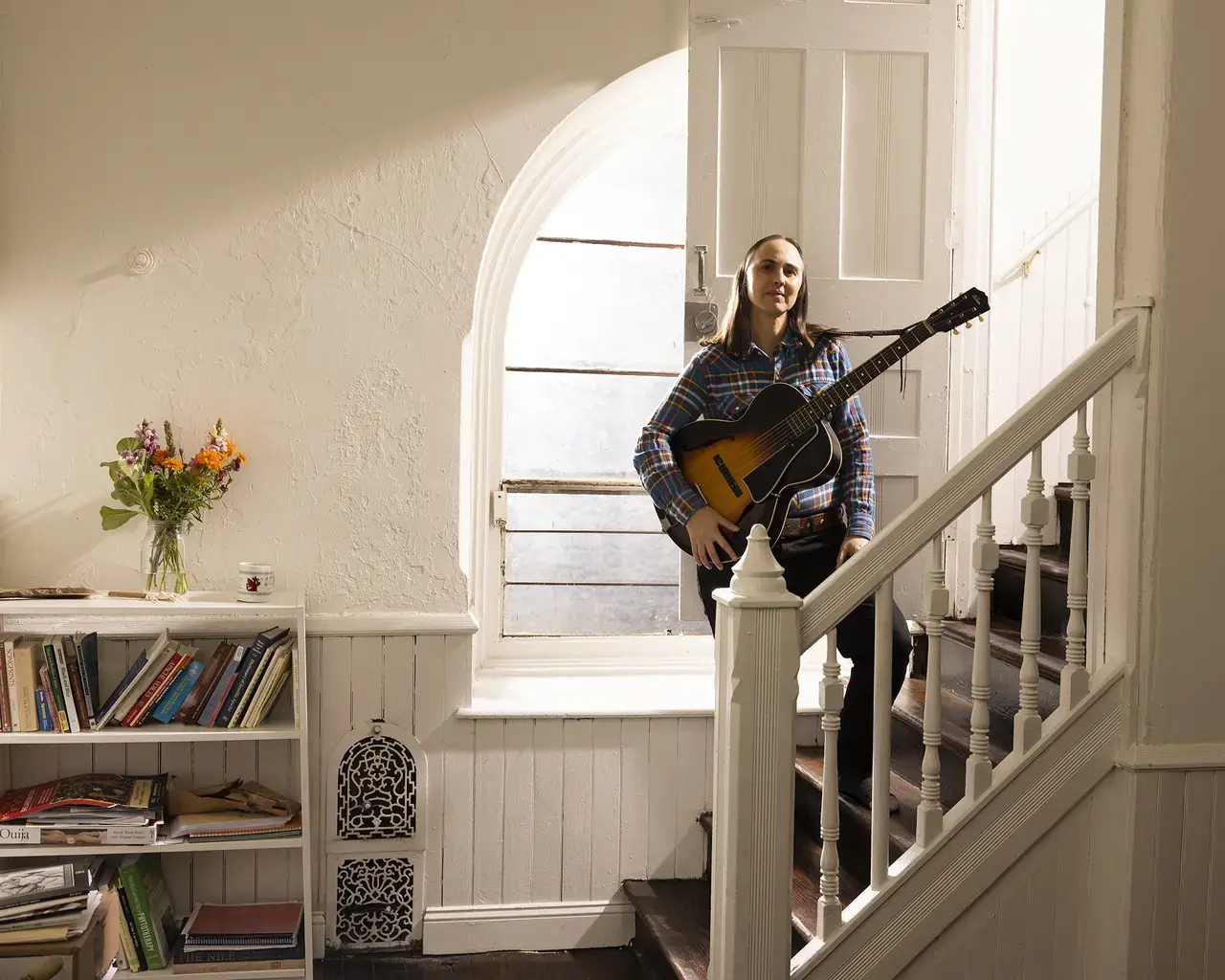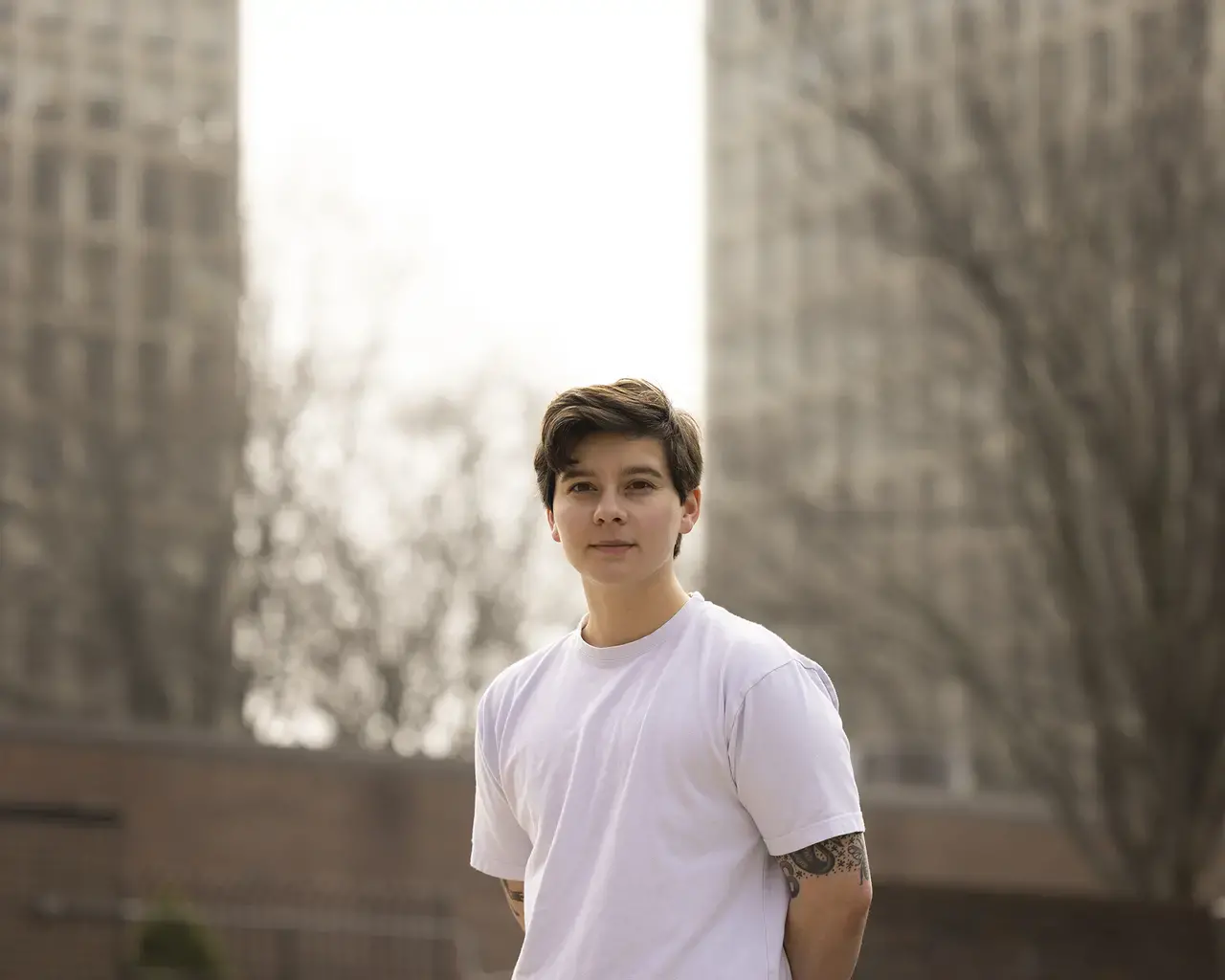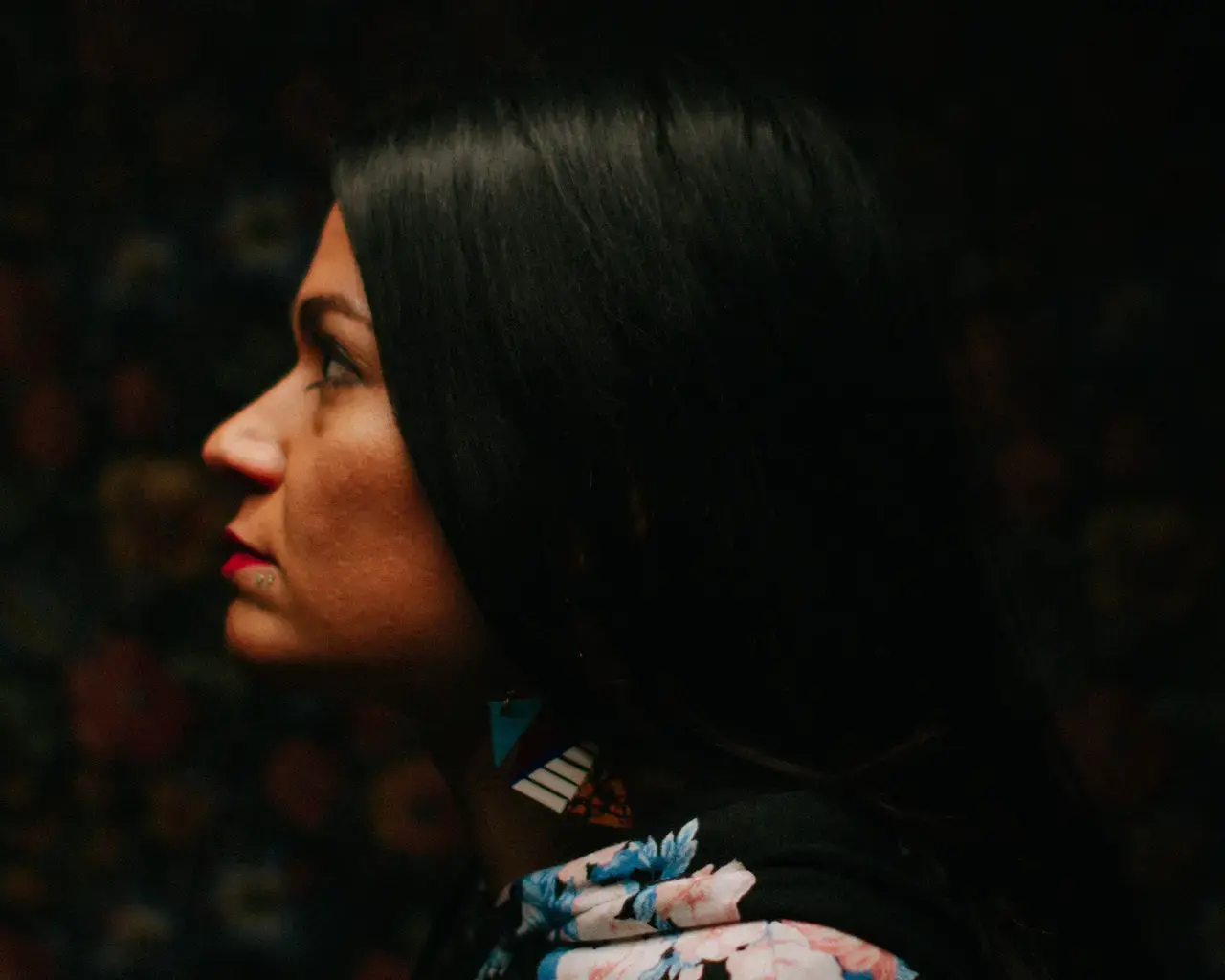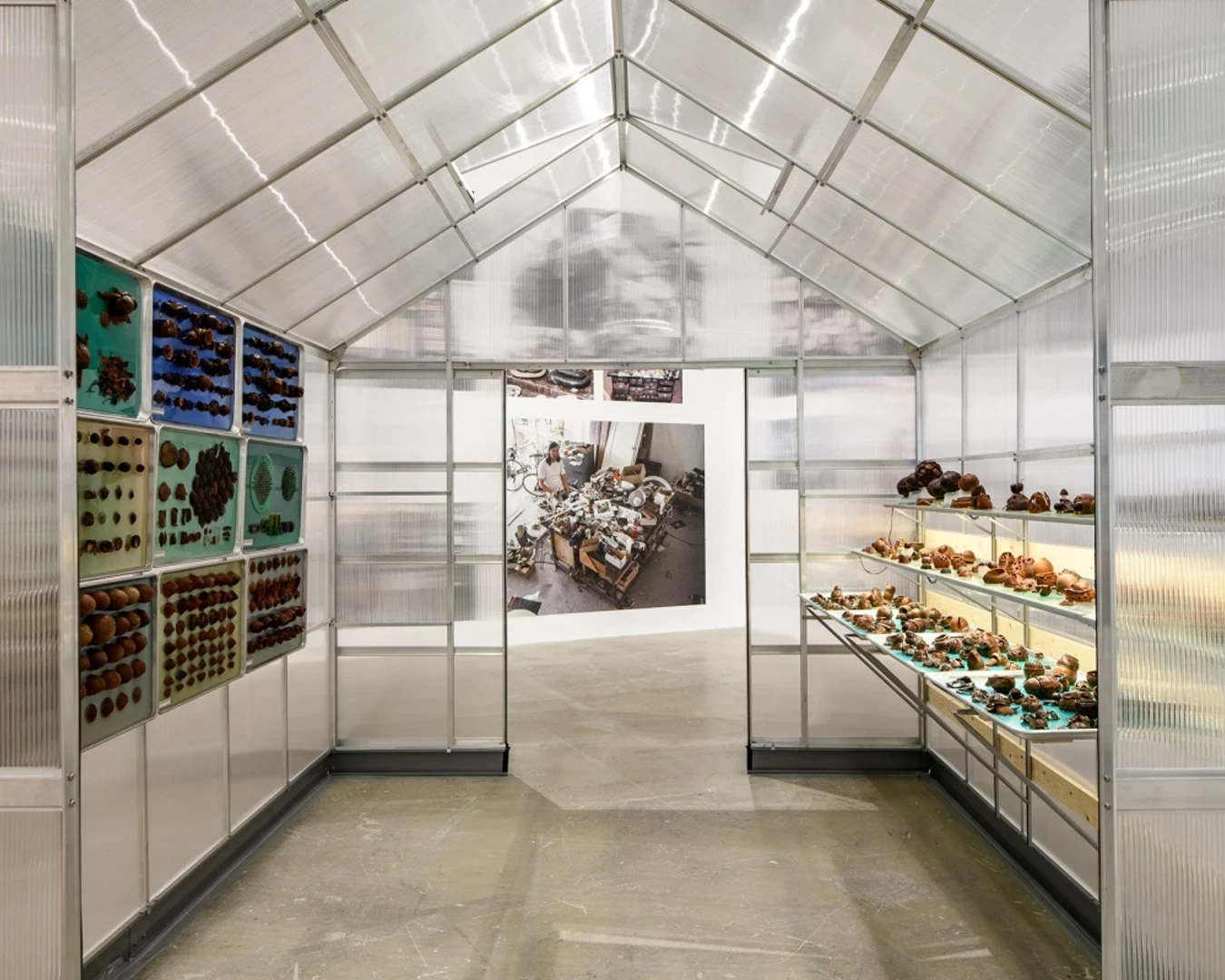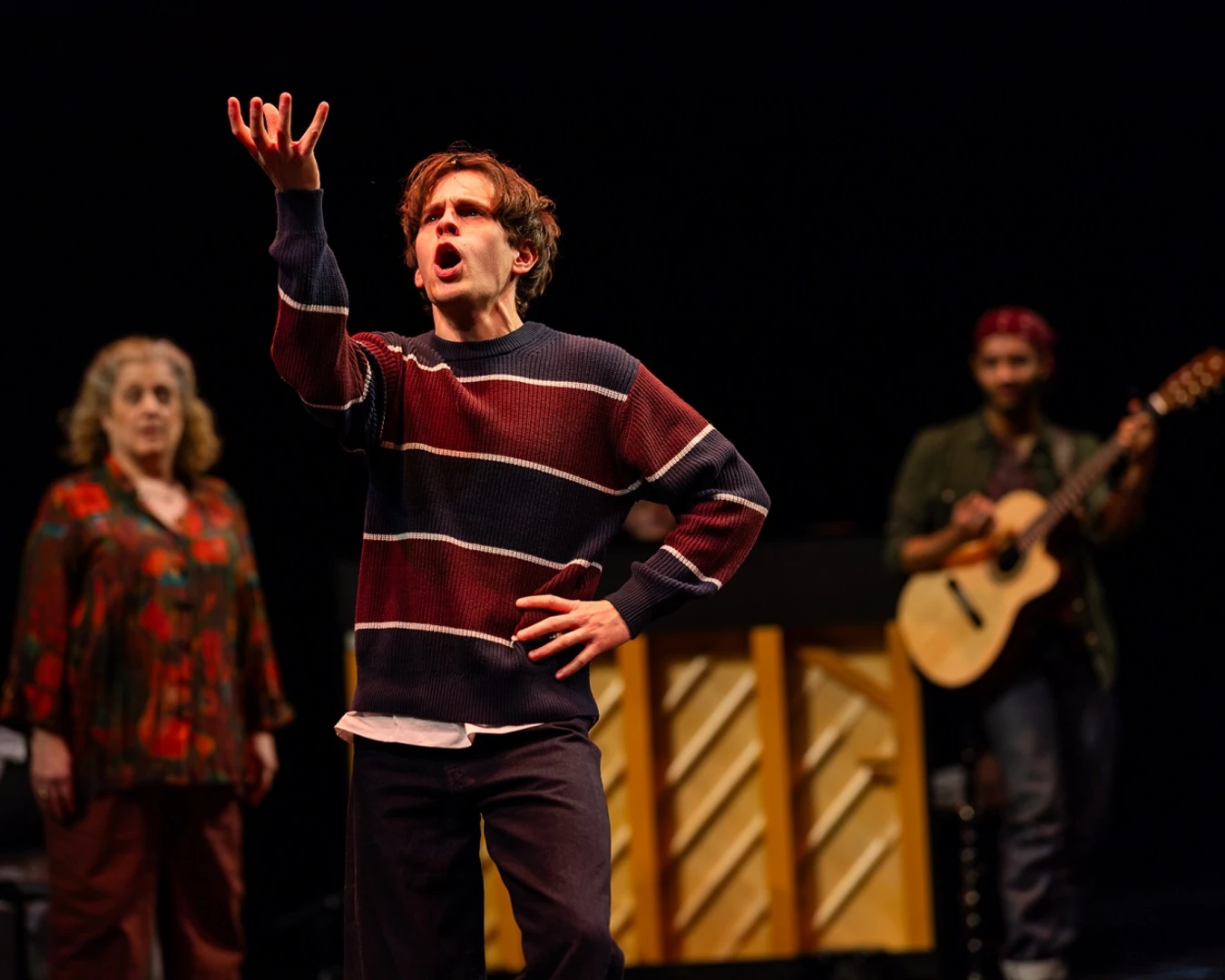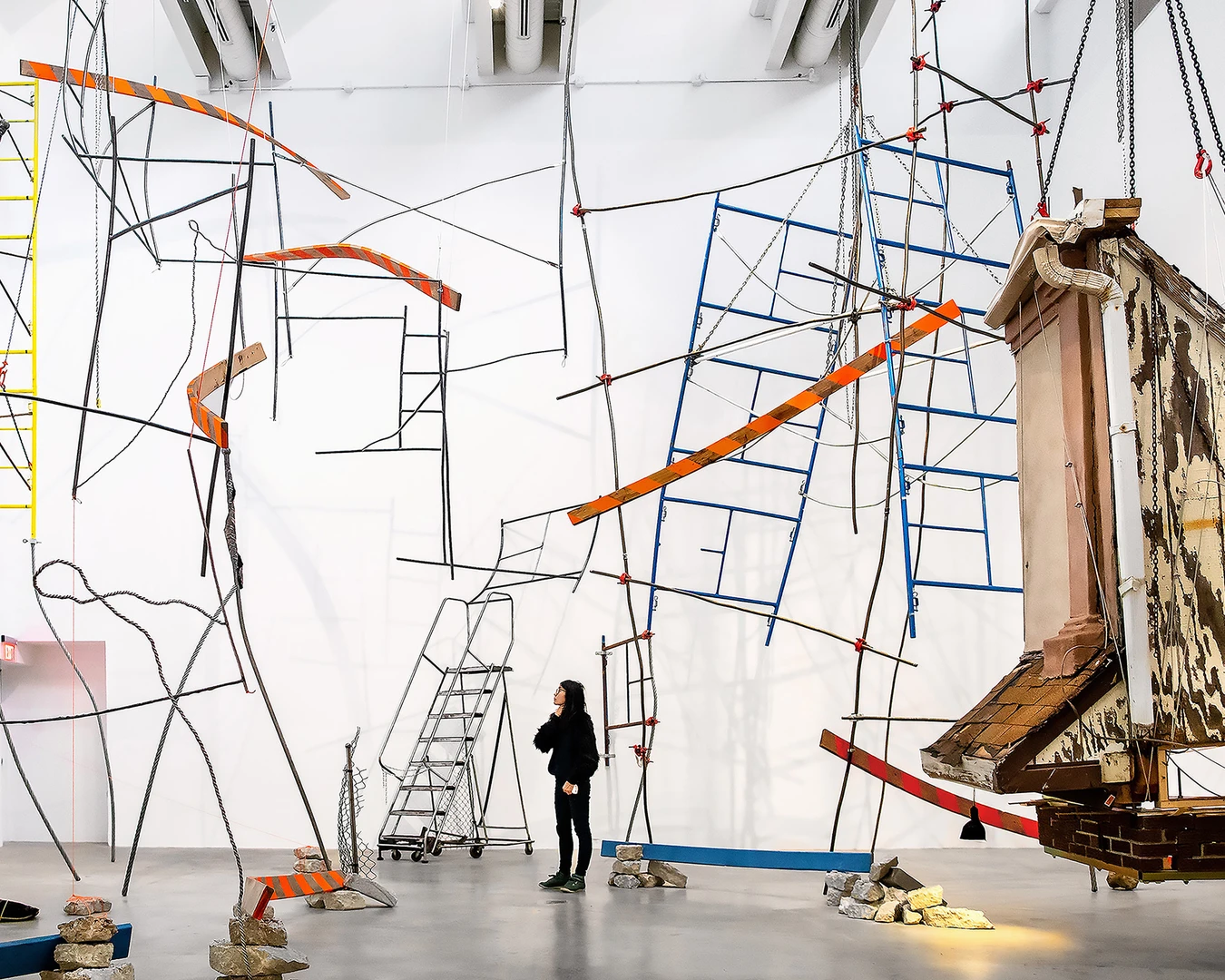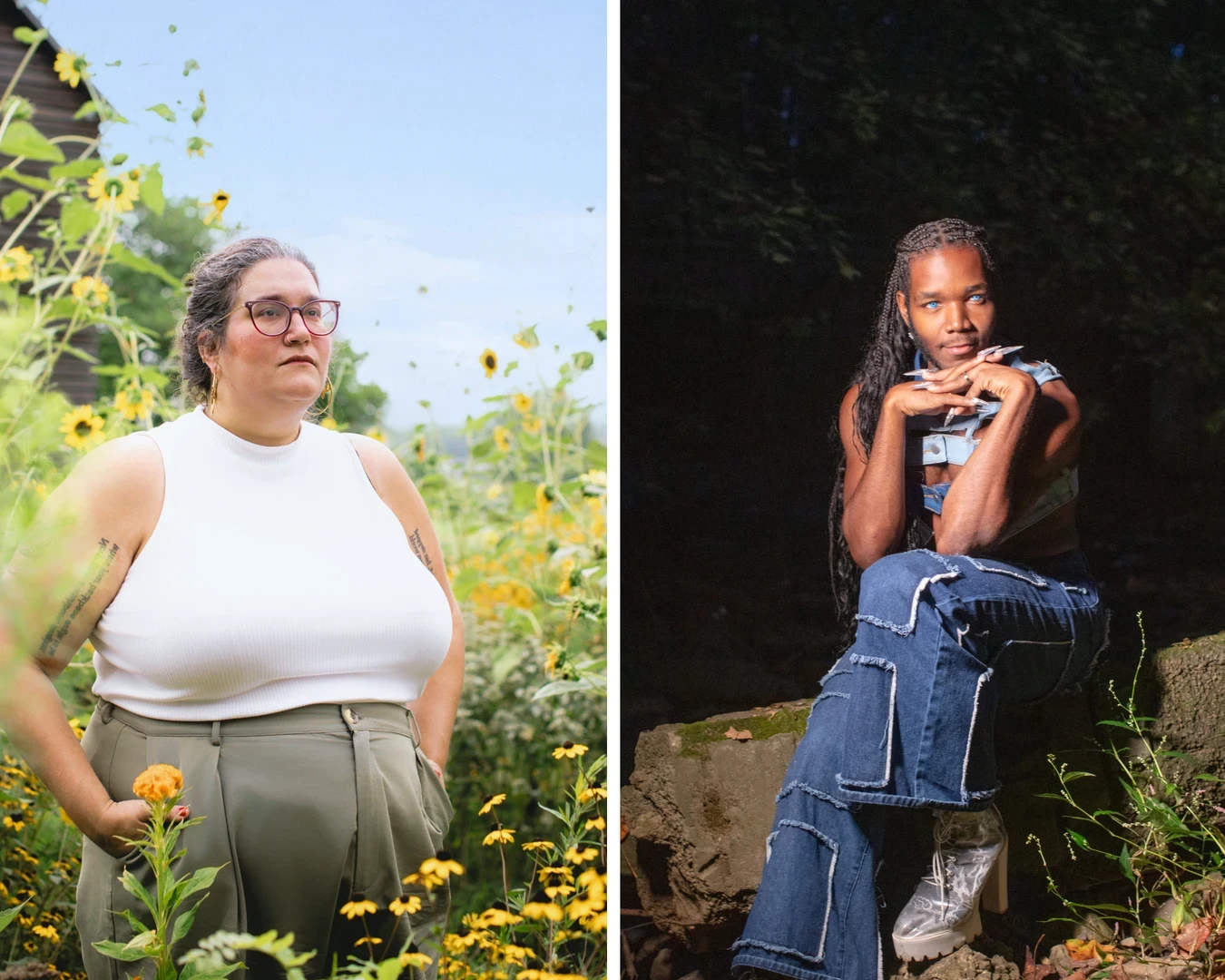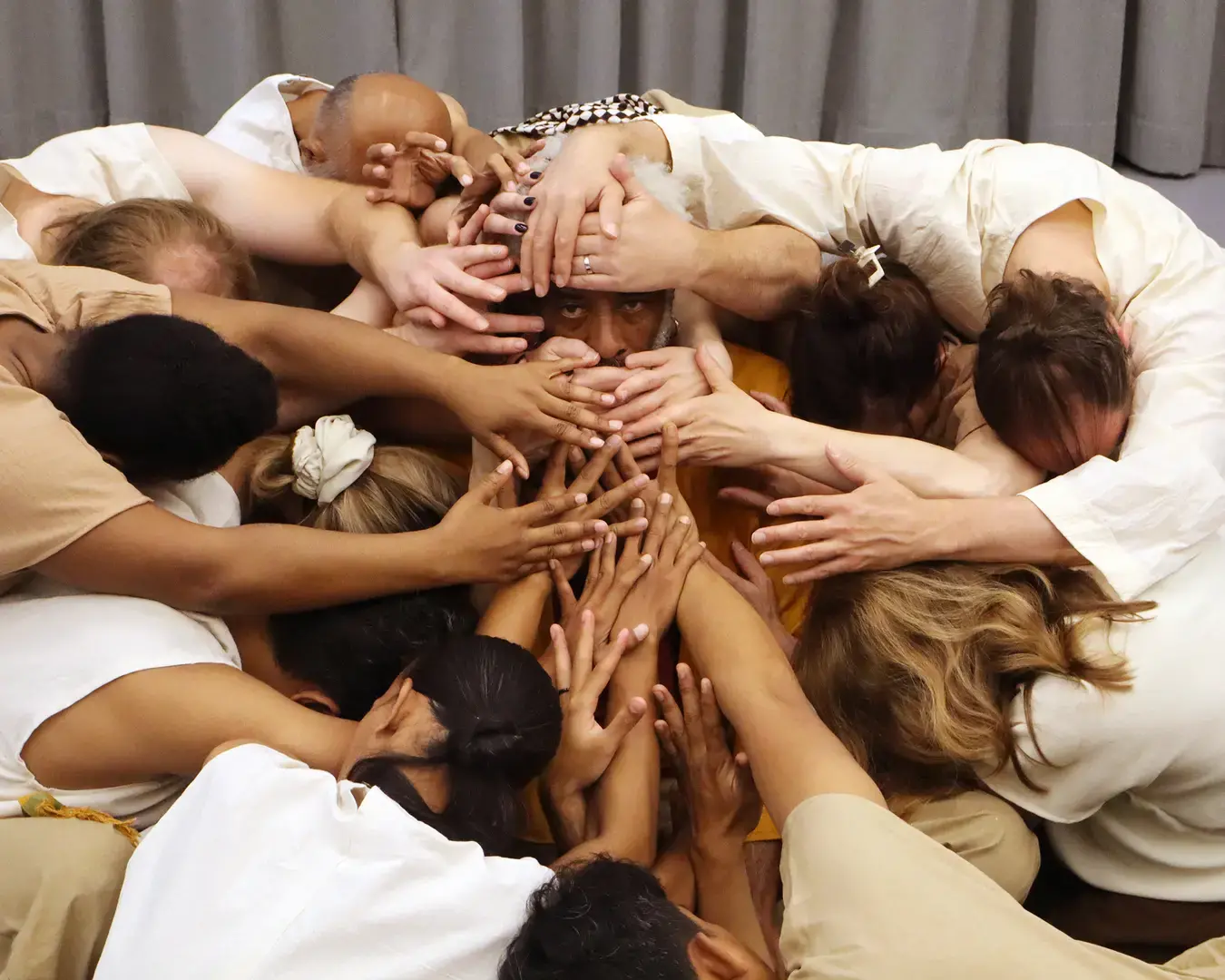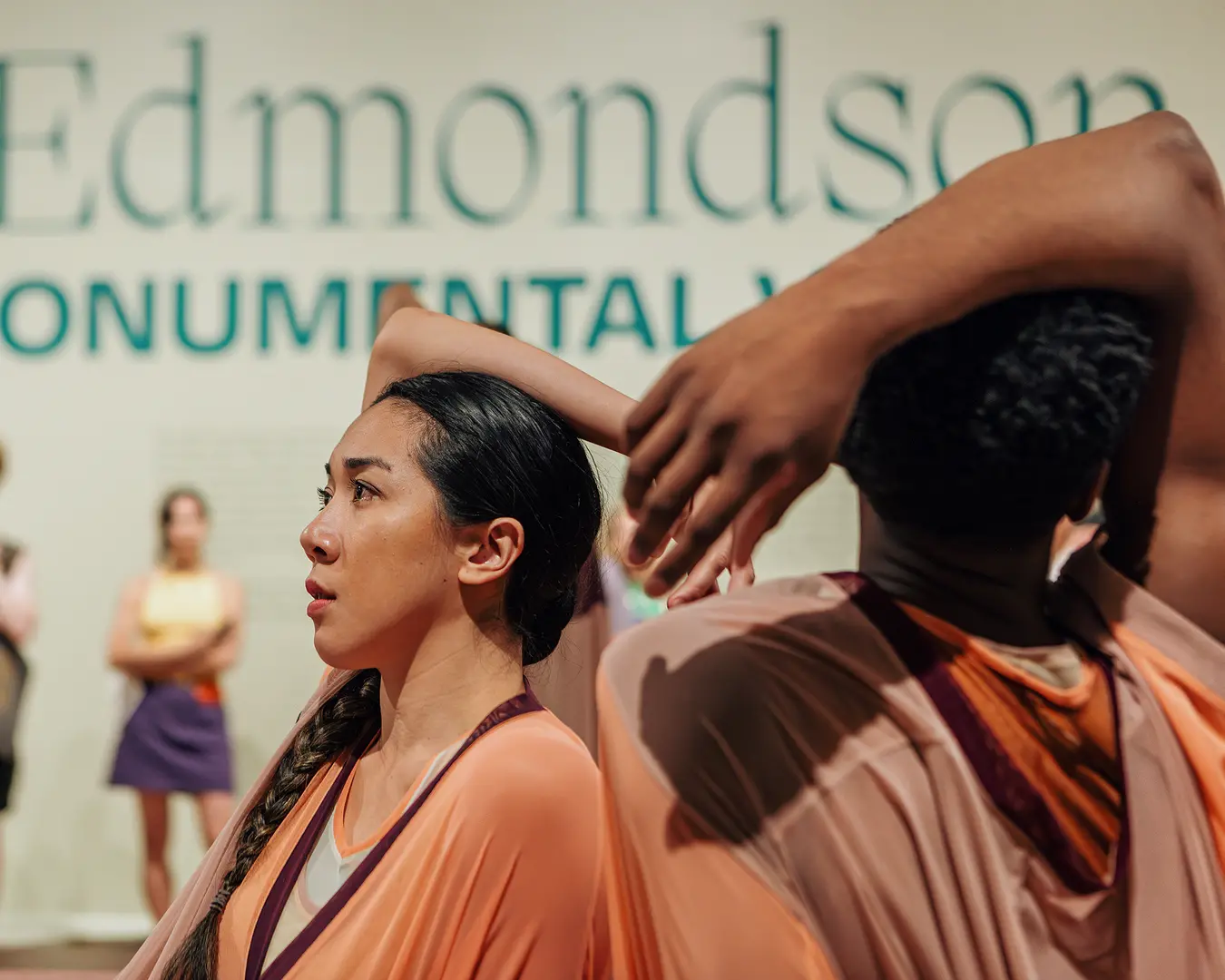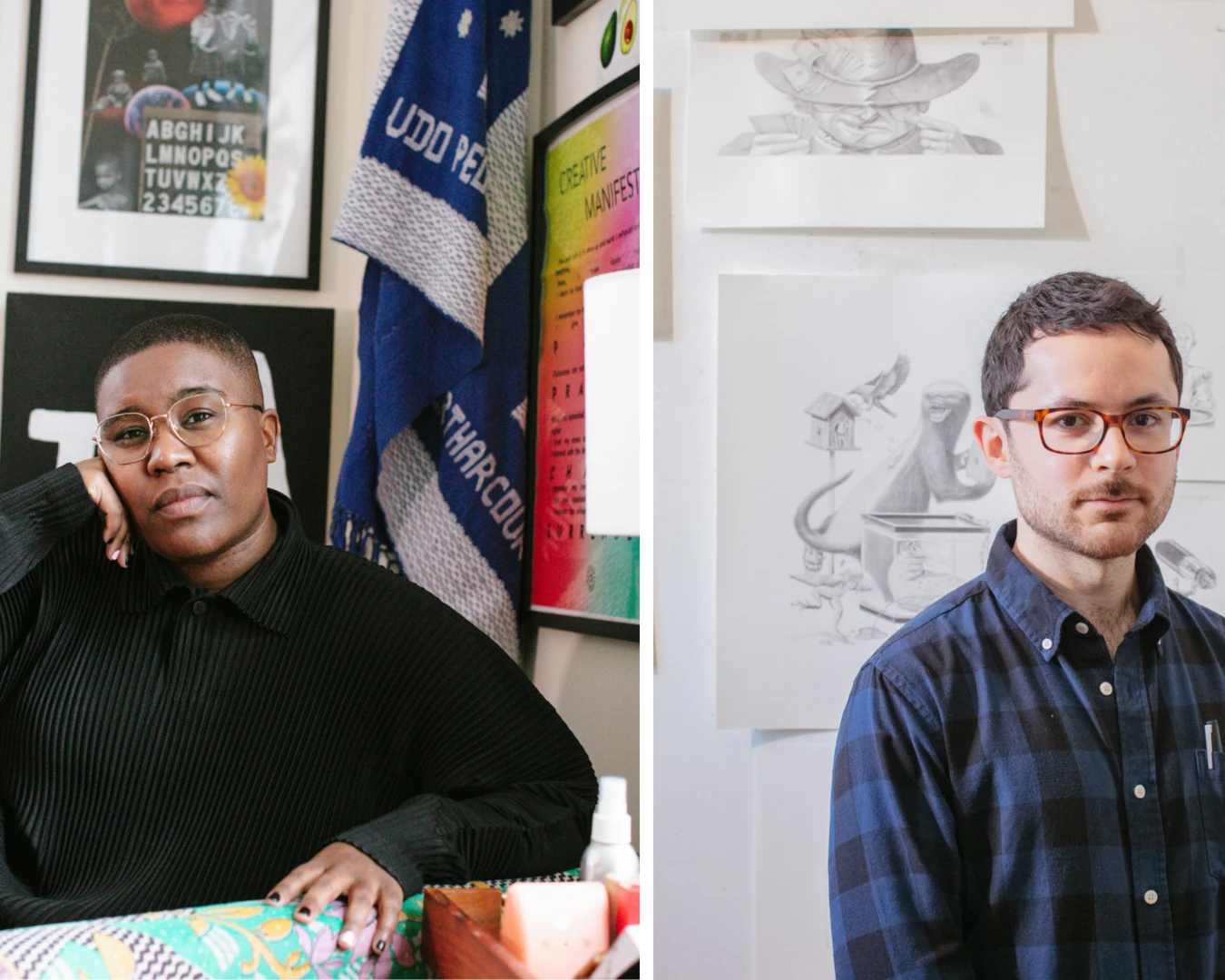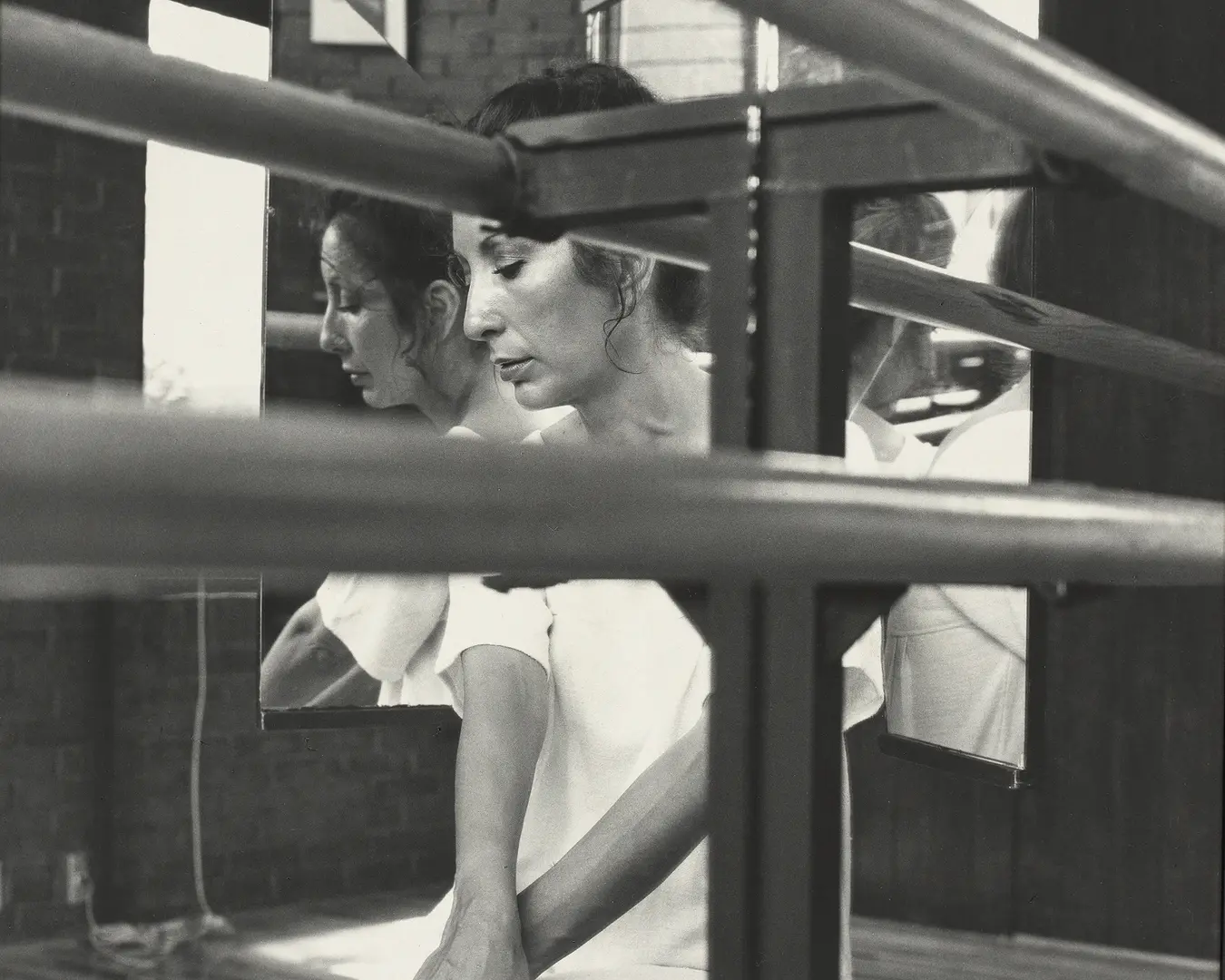The act of creation takes on infinite forms. In our ongoing artist interview series, we illuminate the distinctive artistic practices, influences, and creative challenges of our Pew Fellows, who represent a diversity of perspectives and creative disciplines.
For National Poetry Month, we invited three poets—Julian Talamantez Brolaski (2019 Fellow-in-Residence), Kayleb Rae Candrilli (2021 Fellow), and Marissa Johnson-Valenzuela (2020 Fellow)—to discuss what drew them to poetry, how writing and “pre-writing” permeates throughout their daily lives, and how to sustain a creative practice over time.
About the Artists
A California-based poet and musician, Brolaski is living and working in Philadelphia through spring of 2022 as one of our first Pew Fellows-in-Residence. Brolaski’s poetry draws from multiple languages, literary traditions, and modes of expression—including Apache dialects, Renaissance verse, and modern colloquialisms—to explore how linguistic differences can inform multifaceted identity and experience.
Candrilli’s writing is informed by their experience as a trans person from rural America and addresses transgender rights, the joys of trans experience, as well as environmental justice.
Johnson-Valenzuela is a writer, poet, and musician whose work is concerned with little-told histories, Mexican American identities, migration, and experiences of incarceration.
How did you become an artist? Is there a particular experience that drove you to this choice?
Brolaski
I have a proclivity for it, an orientation even, like a way of being. I don’t think it was a conscious choice, it’s just my way, a tendency maybe carried over from previous existences. As a child I had the tendency to treat language like material, material that would be played with or woven or transmuted, a thing almost to construct worlds with, worlds I could then live inside. I was drawn to words the way that certain birds are drawn to shiny objects. I enjoy picking them up and turning them around.
I also like singing, but it took me a long time to get over the shyness I had about putting my voice in the air. My dad was a piano teacher, and I started playing when I was four. So, using my hands to make art, playing piano and writing, and later guitar, preceded using my mouth to sing and utter and perform, but vocalizing was a natural extension of those tendencies. Poetry and singing, or poeticizing and lyricizing, are either twin arts or they are one art.
Candrilli
I think most folks have art inside of them always, and I am no different. But in my instance, I wasn’t galvanized to choose art as a life practice until I saw [spoken word and performance art collective] Sister Spit in Tucson, Arizona, back in 2009. I was 17 and, to that point, I had little experience of witnessing professional artists at work. It was tremendously revelatory and made even more affecting because Sister Spit was such a queer-centric collective. I started writing poems that night and haven’t stopped since.
Johnson-Valenzuela
Growing up brown, with indigenous Mexican and European heritage, I was asked, “What are you?” a lot. And well, I considered the question. Again and again. In between spaces are not comfortable, but they may offer potential.
I don’t come from art world people or academics. As a young person, I was a big reader. The librarians in the Book It! reading program thought I was lying for pizza, but I read for escape, and I read to be challenged. I wish I’d had a better understanding of what an artist could be at a younger age. I thought I had to be exceptionally good at drawing. And I was just okay. I don’t remember when I realized writing was an art form, or that becoming an artist would be a decision I made. My first creative writing class was a night class at community college. I was shaking during the first class—I was so scared to admit that I wanted to write, that I wanted to feel the way I felt when I read. I wanted to write the work I wanted to read. I wanted to help fill one of the gaps.
What was the first poem you encountered that made you pause and catch your breath?
Candrilli
In 2009, while watching Sister Spit, Kirya Traber read and performed the poem, “these are some definitions.” The poem, and Traber’s performance of it, changed the entire course of my life. I would have been a professional demographer without it, or something like that!
Johnson-Valenzuela
I came to poetry late. I wasn’t impressed by the few classic poets I was introduced to by formal education and found the little bit of performance poetry I’d encountered interesting but not “me.” So it wasn’t until my junior year of college when I encountered Dictee, the 1982 book by Theresa Hak Kyung Cha in a Women in Literature class that I was stunned by poetry. I remember being in awe of what the author was doing even though I struggled to comprehend it on my own. I definitely benefited from the guidance of the professor. That book haunts me still.
Brolaski
I have read poems that quickened my heart and delighted my spirit and raised the hairs on my arms and pleasurably confounded my brain. But none have yet taken my breath. I’m still waiting for that moment. When it happens, I’ll bow to that poet.
What time of day do you most like to write? What environment inspires you or helps you to focus?
Candrilli
I’ve always been terrible at carving a particular time dedicated to practice; I operate in pretty radical spurts of energy. I won’t write for eight months, and then I’ll write twenty poems in three weeks. That said, so much of my life is spent “pre-writing,” i.e., collecting images, fragments, and tossing around ideas that will find themselves in the poems created during the next “spurt.” When I am writing, though, I’m always outside. So winter is tough!
Brolaski
I used to drink alcohol and that predisposed me to write at night. But now I write in the morning with coffee. I like to have a window to look out of. Though the past few days have been hospitable enough to sit on my stoop in Fishtown with my coffee and notepad and look at the cherry tree across the street blooming and write some lines with the sun on my skin. I like to use a yellow legal pad and a blue pen to make my poems, somehow those colors help me.
In California, my kitchen window looks out at the Santa Ynez mountains, which in the morning wear a mantle of mist, like a fur stole, but soon the mist dissipates with the sun, and the mountains change with the light throughout the day and become rose gold at sunset. I never get tired of watching them. It’s enough to make a person a nature poet. I also like to write around the time the sun is setting.
But I am always trying to be available to poetry and thus potentially to be writing all the time. At night I keep a notebook in bed to write down dreams or other ideas or words that come in the states between sleep and waking. During the day I carry a little notebook around in my pocket in case something arrives. Or I use my phone to record melody or song ideas, so ambient composing is happening continually. I used to have a dog and I would write on our walks together, but now I think to myself that I am “taking my notebook for a walk” as if it is an essential thing and it needs to be exercised, and as I move around, I try to catch some lines.
Johnson-Valenzuela
I used to be a late-night writer. When I was at a writing residency called Hedgebrook, the other writers joked I was a vampire because I would stay up all night writing and sleep most of the day. Unfortunately, my responsibilities and day job aren’t conducive to that schedule, and as I get older, I’ve found I need more sleep. Nowadays, I write whenever I can. I’ll take it when I can get it.
My early drafts are usually on paper. Avoiding the internet is key—and leaving my phone in another room. Whenever I can, I try to carve out bigger chunks of time as it can sometimes take a bit of time to reenter something I am working on. I could say that nature helps my writing. And maybe it does, in that it helps me live a better life.
We also invited the artists to pose questions to one another. The resulting conversation is below, with the questions in bold.
Brolaski: Some artists reach a peak and then become stale, or less interesting than when they were young. Some remain great, riding the coattails of their early output. But a few manage to grow finer with time. How do you suppose an artist could become one of those latter types?
Johnson-Valenzuela
Collaboration and new genres. A willingness to play and experiment. A willingness to fail. A resistance to unhealthy forms of careerism. Many artists have themes or threads that can be traced through all of their work, but that need not make things stale. Avoid or question gimmick in the first place, or as soon as one can.
Candrilli: I’d like to know the techniques my fellow artists use to lower the stakes on making their art. I have my own toolbox but am always looking for more. Once an artist chooses to try to sustain on art and art alone, the “production” of art can feel rather dire. I want to know how my fellow artists keep creation fun!
Brolaski
Well, I’m not really sure the stakes should be lowered. You have to put your heart on the line. But that doesn’t mean it’s not fun. For me it helps not to be invested in any outcome for the poem. That bleeds the fun out of it for sure. I know that if I try to make a poem any one way, if I direct the argument or even the topic in advance, it doesn’t work, it loses its urgency and its beauty. I have to acknowledge that the poem has its own kind of intelligence, that works in combination with my own, but that cannot be dictated to or led. I have to let go and flow with it, like a collaboration with the great mystery.
Johnson-Valenzuela
I think collaboration and play are particularly helpful. It is hard—especially when one feels pressed for time because of other responsibilities or because of economic pressures—to choose meandering routes over direct production shots. But I believe the process is as important as the product. So, dinner parties. Dancing. Laughter. Protest. These too are the work.
Johnson-Valenzuela: What is one piece of advice about poetry or the artist life that has most helped you?
Brolaski
Diane di Prima said give everything to poetry and that’s how I try to live my life. I think part of giving everything is also being receptive, being alive and available to anything that could come into the poem.
Where to read, hear, and see the artists’ work
Brolaski is the author of four books of poetry, including 2017’s Of Mongrelitude, a finalist for the 2018 Lambda Literary Award for Transgender Poetry. Read poems by the artist on the Poetry Foundation’s website.
Candrilli has published three books of poetry, most recently Water I Won’t Touch (2021). Their 2017 book What Runs Over won a Whiting Award and a Pamet River Prize and was a finalist for a Lambda Literary Award.
Johnson-Valenzuela’s conceptual, bilingual 2018 album No Otro Lado explores borders and the relationship between the US and Mexico. On April 28, she leads a writing workshop for the One Book, One Philadelphia event series.
